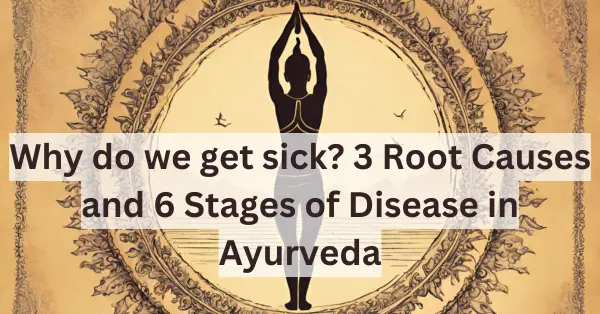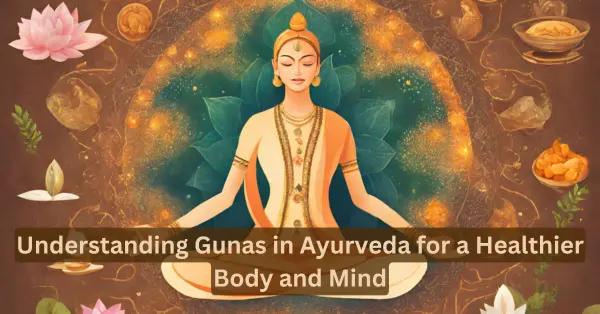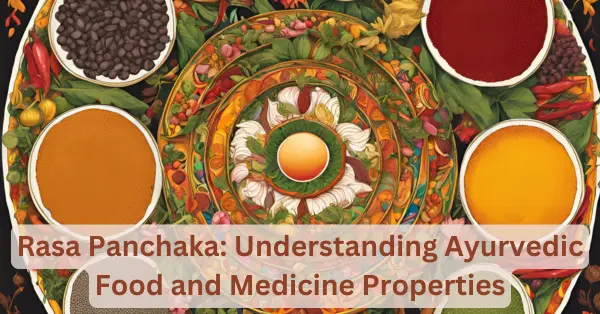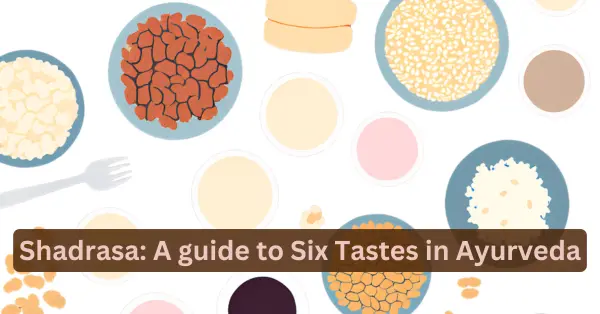In this article, we will discuss pitta dosha comprehensively. All the points about the pitta dosha will be covered from Ayurveda’s point of view.
What is Pitta Dosha?
According to Ayurveda, pitta dosha is one of the three biological energy principles that govern digestion and metabolism.
Pitta holds together the qualities of water and fire elements. It also acts as heat energy in the body and controls the digestive fire of the body.
Pitta dosha in detail
Pitta is the energy of transformation. It transforms the food into nutrients. It is involved in digestion and metabolism.
At psychological levels, it also mentally digests our life experiences. It also regulates the body temperature and hormonal levels.
Doshas are the energy principles that control all the bodily parts and minds of a human being.
Two elements out of 5 basic elements (water, earth, air, fire, and ether) combine to form a dosha.
Here, the qualities of water and fire elements join together to form Pitta dosha. Further, pitta dosha is of 5 types.
Pitta dosha types
5 types or subtypes of pitta dosha are the following:
1. Pachaka Pitta– Rules the lower stomach and small intestine.
2. Ranjaka Pitta– It is present in the liver, gallbladder, and spleen
3. Bharajaka Pitta– It is located in the skin.
4. Alochaka Pitta– Helps in visual perceptions and is located in the eyes.
5. Sadhaka Pitta– Governs emotions and is present in the heart.
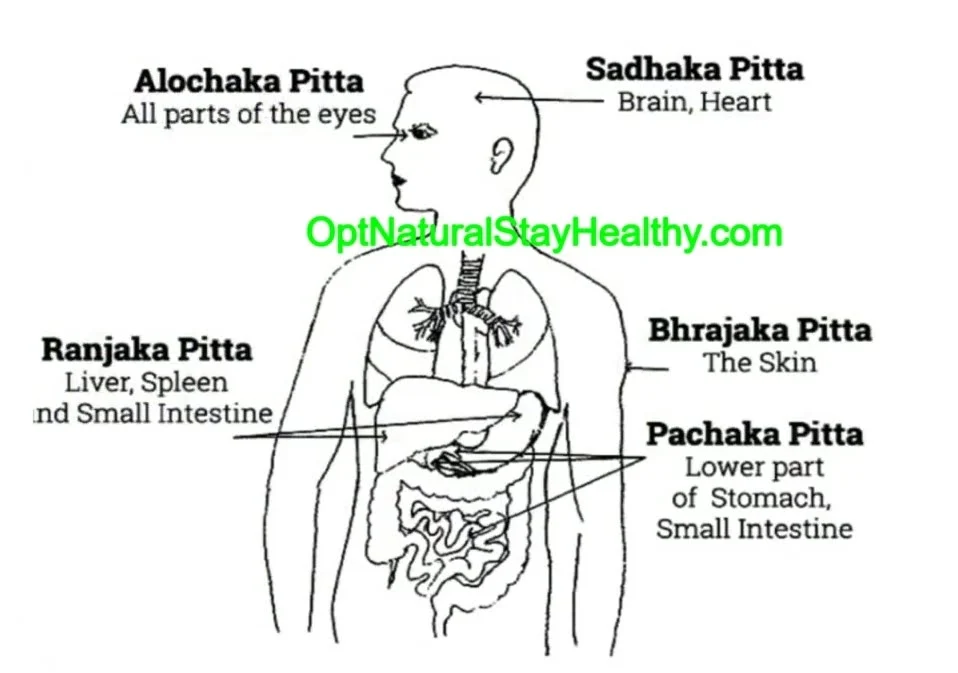
Pitta dosha types in detail
1. Pachaka Pitta
It is primarily present in the stomach and small intestine. Garhini or duodenum is the seat of Pachaka pitta. The duodenum is the first part of the small intestine.
Functions of Pachaka Pitta-
It governs the entire digestive process in the body. It also controls the functions of all other pittas.
If Pachaka pitta increases other four pittas will increase and if it decrease other will decrease too.
Imbalance leads to–
Digestive issues like sluggish digestion, hyperacidity, bloating, and lack of appetite.
How to balance Pachaka pitta–
Change to healthier dietary choices and habits
2. Ranjaka Pitta
Located in the liver and spleen. Ranjaka pitta can be correlated to the “heme” component of the blood.
Functions of Ranjaka Pitta–
Responsible for blood formation. Ranjaka Pitta converts the digested (good) part of the food into blood.
It helps in producing bile and enzymes in the liver. Helps in forming white blood cells in the spleen.
It also controls the elimination of the toxins from the blood.
Imbalance leads to–
Skin problems and hair greying
How to balance–
Include herbs Kutki and Turmeric in the food.
3. Bhrajaka Pitta
It is located in the skin.
Functions of Bhrajaka pitta–
Gives complexion and tone to the skin.
Imbalance leads to–
Skin Disorders like skin dryness, acne, and hypersensitivity.
How to balance Bhrajaka Pitta-
By improving digestion and daily skin care.
Healthy Skin Tip– If a person has sluggish digestion, no skin product can help the skin problems. Only if you have proper digestion, skin care products will work for you. Skin is the mirror of the inner physiology.
4. Alochaka Pitta
It is located in Retina. It is correlated to the pigments of the retinas(Rodoxin).
Functions of Alochaka Pitta–
Controls vision and color perception
Imbalance leads to–
Poor vision and re-occurrent eye infection.
How to balance Alochaka Pitta-
1. You must do Pranayama especially Nadi Shodak Parnayama.
2. You can take herbs; Triphala, Brahmi Grita, and Saraswata Aristha after consulting an Ayurveda doctor.
5. Sadhaka Pitta
Located in the heart and head.
Functions of Sadhaka Pitta–
Responsible for mental functions like intelligence, self-consciousness, and knowledge.
Imbalance leads to-
Wave of emotions in different ways
How to balance Sadhaka Pitta–
1. One can do nature walks, Yoga, Pranayama, Music, and Meditation to balance
2. You can take herbs; Arjuna, Brahmi, and Ashwagandha after consulting an Ayurveda doctor.
How Piita dosha subtypes work together
Just like vata or kapha doshas, these pitta dosha types need to work in coordination for the proper functions of the body.
eg- If Pachaka pitta is low, there will be slow digestion of food, and the other pitta subtypes dependant will not work properly.
Pitta Body Type People

- People dominated by Pitta dosha are moderately built or athletically built.
- They don’t gain weight easily
- They have a lustrous complexion
- Perfect digestion
- Strong appetite
- Cannot tolerate hunger
- Sensitive and bright skin
- Soft and fine hair
- Hair prone to easily greying
- Prone to hair fall
- Hands and feet warm to touch
- Relatively warm body temperature
- Intolerant to hot weather
- Cannot tolerate physical labor
- Prone to inflammatory disorders
- Prone to body odor and breath issues
- They have excessive sweating and are intolerant to heat
Pitta Dosha Personality Traits
- They have an attractive personality.
- They are good thinkers and leaders
- Quick in making decisions
- Have powerful intellect and ambition
- Love taking challenges
- Competitive
- Aim to win
- Clear communication
- Abundant energy
- Good memory and concentration
- Hard-working
- Make money easily and spend it on luxury
- You will find them hot-tempered
Attributes or Qualities of Pitta Dosha
1. Oily
2. Absorbent
3. Hot
4. Light
5. Liquid
6. Salty, sour, and pungent in taste
Location of Pitta dosha in the body
The pitta is mainly situated in the stomach, small intestine, liver, spleen, pancreas, and sweat. 
Factors Aggravating Pitta Dosha
- Excessive exposure to sun
- Sour and fermented drinks
- Spicy and hot foods like chili
- Alcohol
- Excessive physical activity in the hot afternoon
- Anger and fear
- Salty and pungent foods
Natural factors Aggravating Pitta Dosha
- Autumn season
- Summer season
- During afternoon
- During the process of digestion
- Middle age (age between childhood and old age)
Pitta Dosha Imbalance Symptoms
- Heartburn
- Fever
- Rashes
- Inflammation
- Acne, Boils
- Diarrhea
- Burning sensations
- Rectal bleeding and hemorrhoids
- Gastric and peptic ulcers
- Anger
- Irritability
- Excessive hunger
- Intolerance to heat
- Sour taste in the mouth
- Discomfort upon missing meals
Pitta Dosha Diseases
There are 46 diseases or disorders caused by Pitta Dosha according to Ayurveda. The list of Pitta diseases is-
- Jaundice
- Stomatitis
- Herpes
- Pharyngitis
- Proctitis
- Hemorrhage
- Fainting
- Discoloration (Yellow or Green) of urine, stools, and eyes.
- Delirium
- Anorexia
- Fever
- Diarrhea
- Penis Inflammation
- Conjunctivitis
- Bad Breath
- Extreme thirst
- Skin spots (Blue)
- Bitter and metallic taste in the mouth
- Yellow or green discoloration of the body
- Urticaria
- Disorders of bleeding
- Formation of red Vesicle
- Always dissatisfaction
- Skin Patches (Red and round)
- Burning sensation(skin)
- Skin Cracks
- Itching
- Blood Sloughing
- Muscles sloughing
- Body Ache (Acute)
- Bad body odor
- Heavy sweating
- Temperature (Mild to high)
- Heartburn
- Burning sensation (internal)
- Burning sensation (shoulder)
- Gastroesophageal Reflux
- Excessive desire for cooling things
- Dryness of mouth
- Giddiness
- A feeling of intoxication
- Scorching
- Fuming
- Constant burning sensations
- Weakness
- Extreme bouts of anger
Conclusion
Hope the article has cleared all the doubts Pitta Dosha. Once again, it is one of the three life energies behind all our bodily functions.
Ayurveda recommends keeping the three doshas balanced for a healthy body and mind.
Any form of query is encouraged in the comments.
Reference
Ayurvedic doshic theory
Pitta brain type
Pitta subtypes functions
Frequently Asked Questions FAQ Pitta Dosha
Yes, they are the same. In short, you can say pitta instead of pitta dosha every time.
No, Pitta is called dosha in both a balanced and unbalanced state.
Unbalanced Pitta is called “vikrutha Pitta dosha”. Balanced Pitta is called “prakrutha Pitta dosha”.
Dosha is a Sanskrit word that means “fault”, or “that causes problems”.


